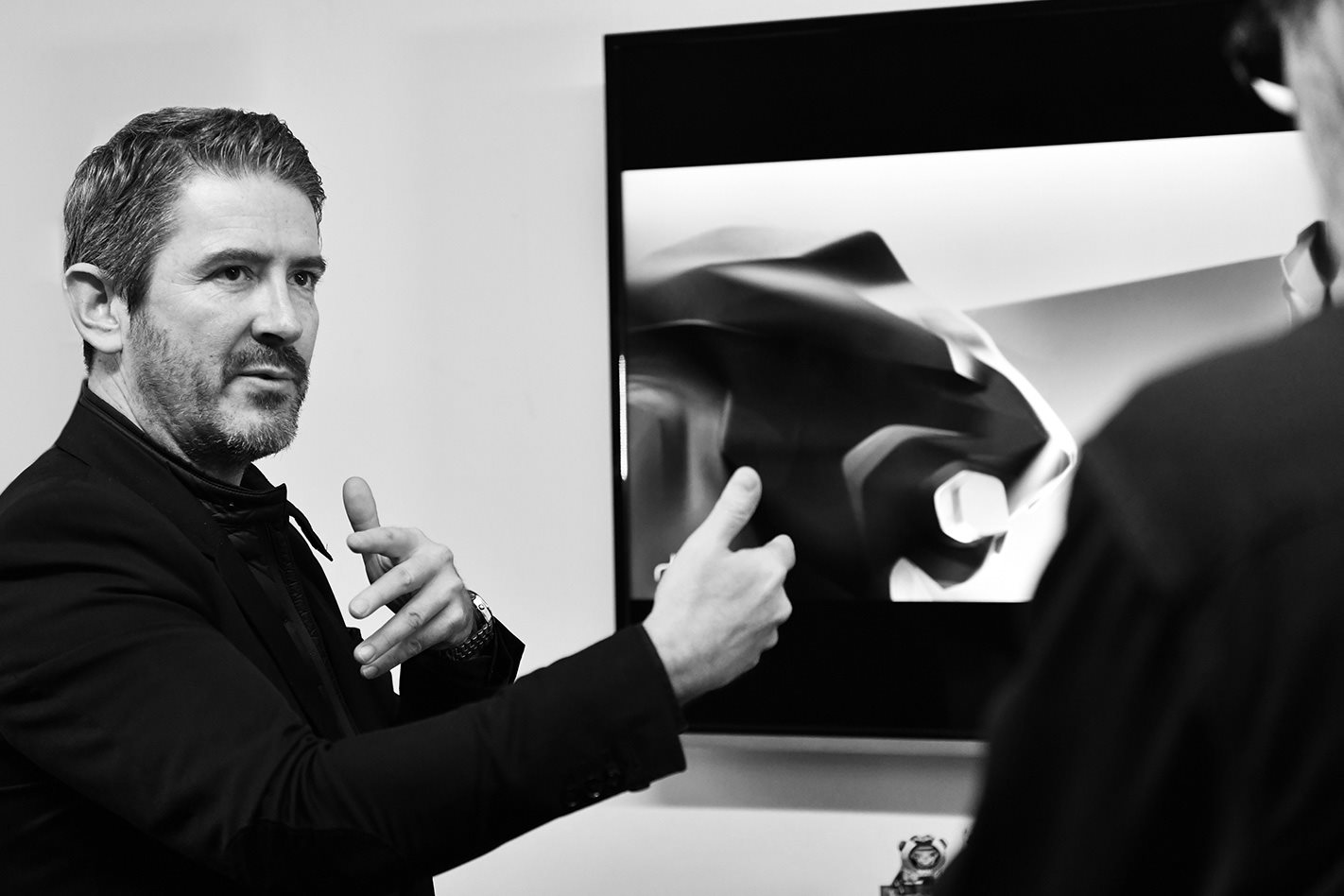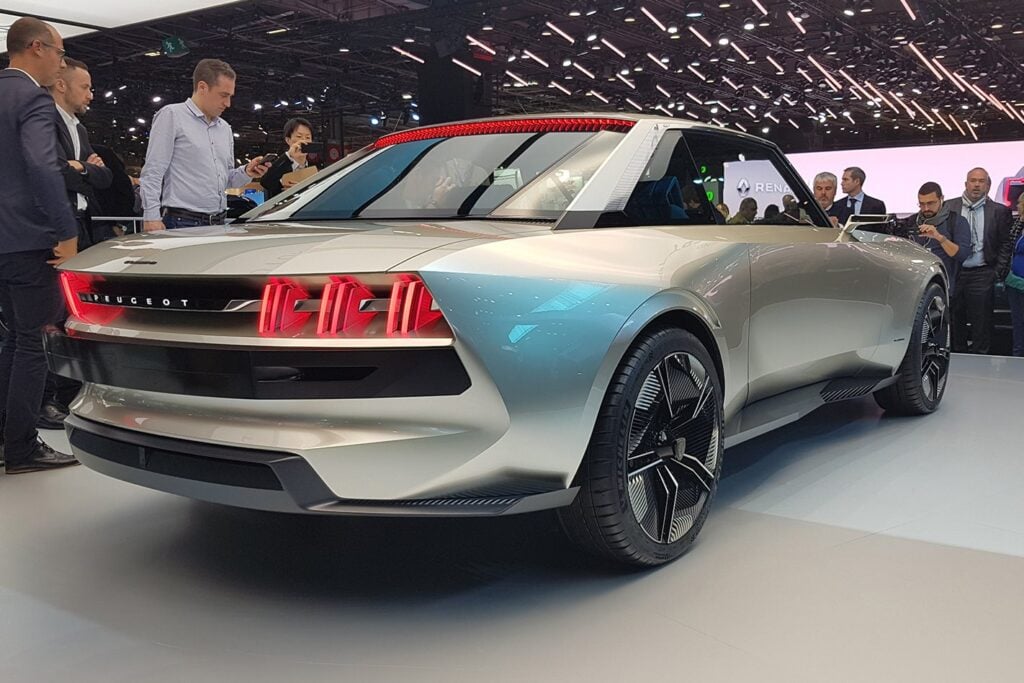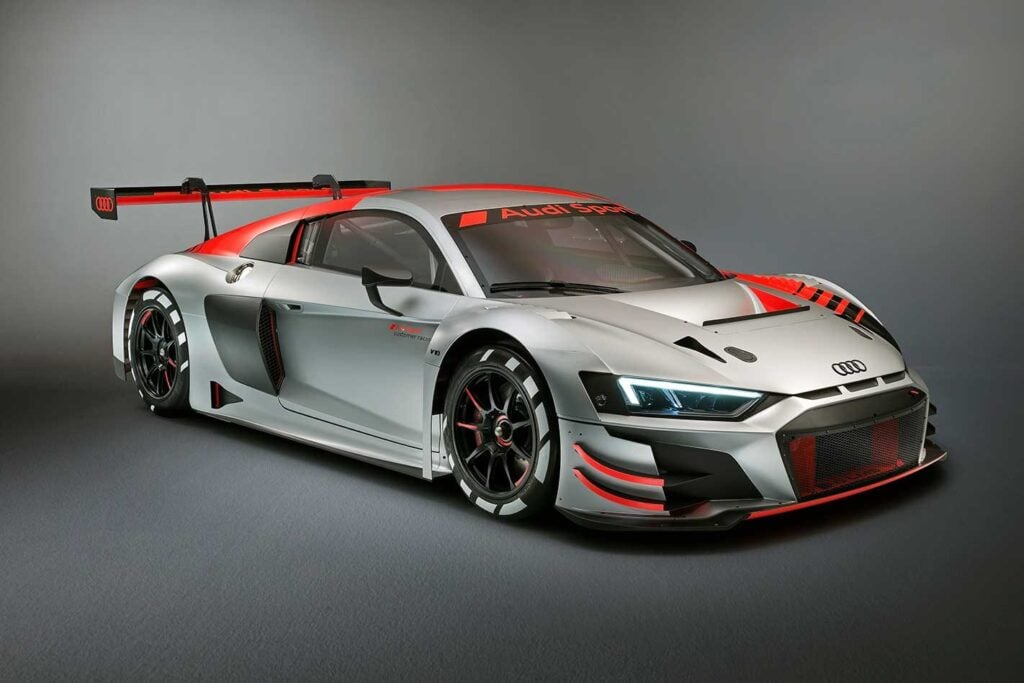PEUGEOT designer Gilles Vidal is definitely more an Event Horizon guy than a Wall-E fan. “There is no happy science fiction movie,” he states, hands up, brooking no argument. Hang on. Weren’t we discussing the Peugeot e-Legende concept just a moment ago? Time to press rewind.
Admitting that the buzz around the throwback-styled 504 Coupe tribute has been “unbelievable – we didn’t expect the craziness,” Vidal starts talking through the rationale for the warmly familiar form factor.
“All car manufacturers when they talk about autonomous driving and electrical cars, they try to do something super futuristic, eventually science fiction-esque, you know? Which is fine, but we say at Peugeot, let’s not fall into that because it’s easy and we can do it when the time is right.
“Meanwhile, science fiction always shows us a scary future. By the way, there’s no happy science fiction movie! I looked actually. There’s no enthusiastic. They’re all dark in one way or another. All scary in one way or another. The future delivered to us in this way is always a bit weird. The future can be super-emotional, interesting, bright.
“Let’s not fear autonomous driving as a loss of something because it will be delightful in many ways. Let’s create a concept that pushes this philosophy.
“By luck it’s the 50th anniversary of 504 coupe. Let’s give it the shape of a heritage car. The form language is not retro in any way, if you look at the shape of the body, the surfacing, there’s nothing retro about it,” he says, perhaps a little predictably.
Retro styling has almost become shorthand for lazy design and no matter how much he’s prodded, he won’t admit to cribbing another’s styling.
“Despite the silhouette obviously being the shape of the 504 Coupe, with some graphic gimmicks on the car that are links to the past, but their function is futuristic. The interior has huge screens and super connectivity, a steering wheel that collapses completely, yet we have velour seats that are very colourful like in the late 60s, and the wood and brass instead of chrome.”
Earlier senior Peugeot product planner Bernard Hesse had reckoned that there was ‘maybe 20 percent’ chance that the e-Legende would make production. When asked what elements of the show car could make production Vidal was more forthcoming.
“There’s a lot of things we can take into production,” he said. “External design. The surface treatment, the form language of the car. You see a very crisp line on the body sides, on the door and it fades to nothing in front and rear. The way this line fades into nothing is quite magical.
“This takes a lot of experimenting with the stamping guys in the factory. We started talking to them 8 months ago and said that it would be easy to make on the concept car because it’s carbon fibre and you make it by hand, but how could you do this with metal? Can it be feasible in production? It might seem a tiny little detail, the way this line disappears, but if you manage to achieve this all around the car in terms of how you creates lines and surfacing and graphics– this execution in terms of design – then the whole car will look so much more modern than whatever is on the road around it.
“What’s at stake, if you achieve this properly and apply it everywhere is a tremendous gap in terms of modernity. Done correctly, it’s changing your perception of the car itself. Things like this we might push into production.”
The clever surfacing isn’t the only thing that can be readied for production. “There’s also the light design in the rear,” says Vidal.
“We already have the three claws at Peugeot but we wanted to create a three dimensional light more and more. We experiment on concept cars and work with specialists and suppliers to make it feasible.”
Then the conversation makes a screeching turn in a different but perhaps even more fascinating direction.
“You will see in the future the biggest revolution in autonomous driving where you remove the architecture of the interior,” Vidal says.
“You remove the air conditioning box, put it elsewhere. If we do the history of dashboards – we call this planche de bois in French which means ‘plank of wood’ – and it started like this. It was a plank of wood with holes. We made a hole to create the glovebox, and so the dashboard became bigger and bigger and longer and longer. There’s now an airbag, there’s now tubing for the air vents and we put a lot more things in, little by little. The dashboard, as an object, became the main thing to design in an automobile. It should be beautiful. The Audi one should look like an Audi dashboard and so on, but really what’s at stake today is to make it disappear,” he adds.
“We look to give room, to give emptiness back to the clients so they can do something else. So where do we put the airbags, the AC box, all that stuff that’s still useful? To give room to put physical objects in the car. People will bring a lot more physical things into their cars than today.
“They’ll have more time in their cars to do things. So we need to not just put bigger screens but put more storage, create more space, more room in the car,” he says.
“That’s what we have in the e-Legend. We have a huge screen from your toes up to the windscreen, almost the whole width of the car. It’s like a TV on your carpet with you sitting on your super low chair.”
When asked how it would be possible to hide items such as air conditioning units, Vidal admits that there are challenges. “Nowadays with thermic engine and gearbox, it’s a bit tricky. With electric cars you can push things under the bonnet.
“The airbags can go in the roof for the passengers. There’s step by step, item by item, you can get rid of these things and then you can get rid of the dashboard altogether. Really they will spend a very interesting life inside when they are not driving, keeping their attention on the traffic.”
Vidal is nothing if not optimistic about the future direction of vehicle design. “People want emotional, desirable objects. In 2025 or 2030 there will be many cars like this, cars like Renault with their pods, very beautiful. They can co-exist. They can have a super crazy futuristic box or something very different. The variety and span of objects will be crazy,” he enthuses.
“We need to dare more: deliver more innovation in design. If you look back 15 or 20 years ago it was very hard to buy a daring looking car. Now people are demanding special looking cars. A good example is the Nissan Juke. Some find it nice, some find it ugly, but it’s special, it’s particular. For Juke lovers, beautiful or ugly is not a parameter of choice. Special is a parameter of choice.
“Line up the Peugeot range and you will see brand logic, but they are not like Russian dolls. The 308 and 508 are very different but they belong to the same brand. Buyers have a different lifestyle so it’s not a matter of age.
“We will find a certain lifestyle, a certain spirit, whether it’s in young people, 40s or 50-year-olds. We don’t use the old way to split clients. A 20-year-old may have the same vision as me, a 46-year-old. It’s not an age thing anymore. You don’t target an age group. Marketing is tricky these days.”
Vidal demurs when asked whether there’s a conscious effort to inject a French flavour into his work. “No, there’s not any special element of Frenchness injected into the design. If it feels that way, then it’s cultural and it happens naturally. Union Jacks, Italian colours, the two cool national things. The Tricolore; blue, white red, is it cool or is it tacky? I think these days it’s becoming cool. Volvo can do it now because Sweden is desirable as a country. They can do it because they can cultivate their culture,” he says, before pausing and laughing. “But since they became Chinese, they’ve never been so Swedish.”






